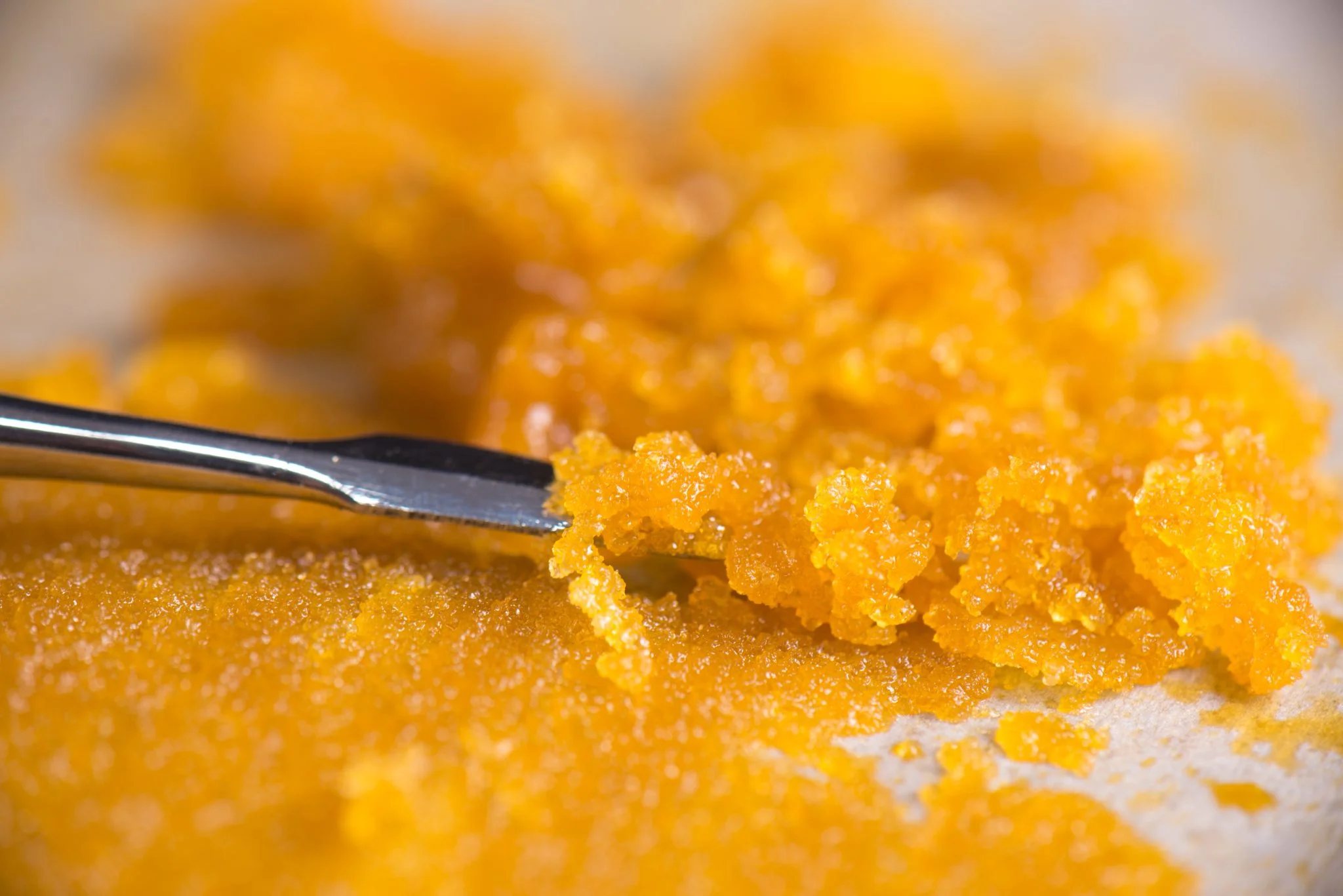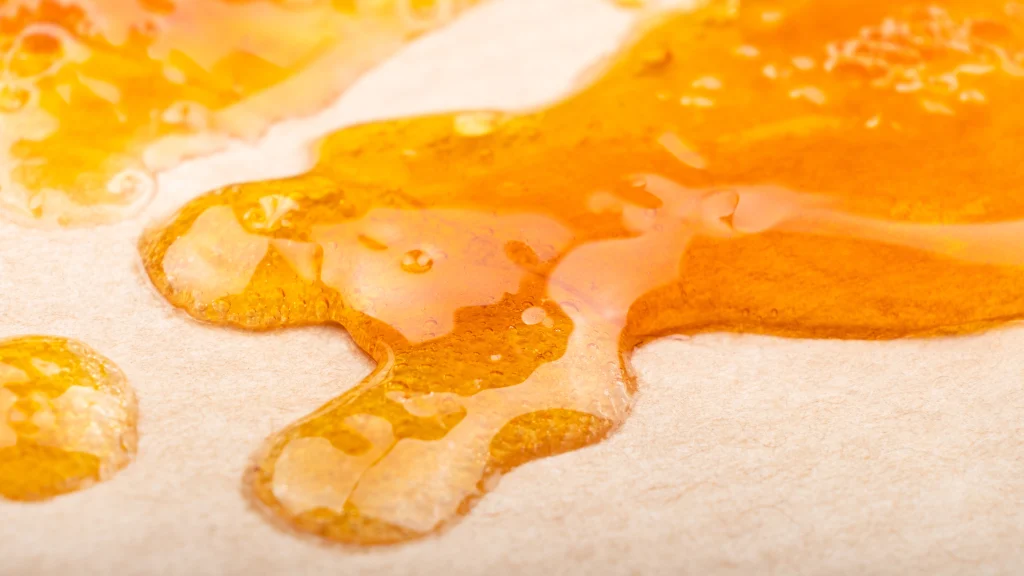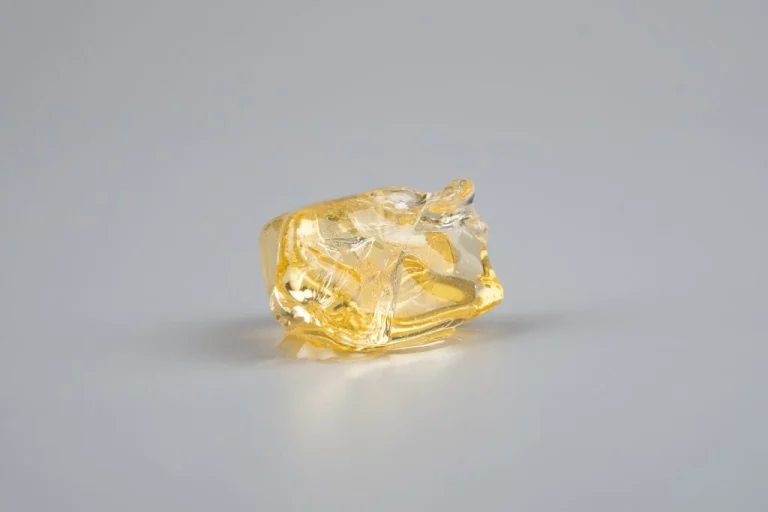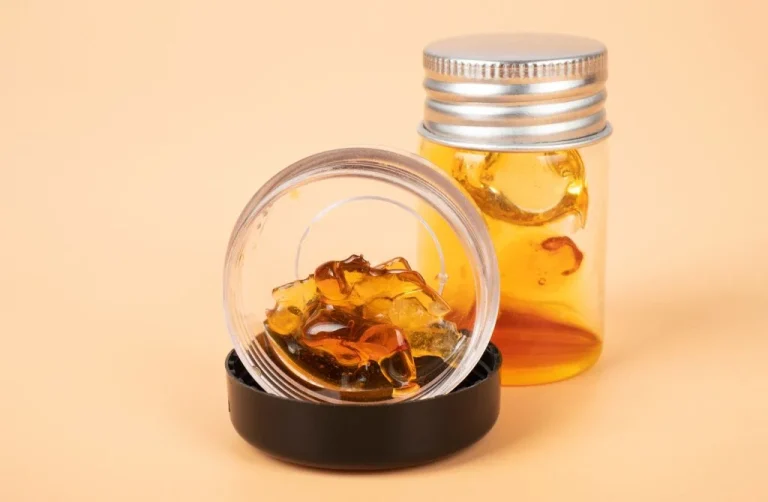Live resin. Live rosin. Rosin vs. resin — is there a difference?
Understandably so, many people assume that both rosin and resin are the same product, creating serious confusion when it comes to getting the concentrate you want.
Well, we’re here to break down the rosin vs. resin debate, letting you know the precise differences between these two products.
So, when it comes to rosin vs. resin, what are the differences? Which is better? Should you go for rosin or resin? Let’s find out.
What is Cannabis Rosin?
Rosin is a type of cannabis concentrate derived by applying heat and pressure to dried or cured cannabis plant materials to extract oil.
The oil, known as rosin, usually contains high THC levels of up to 85% — if the starting material is a high-THC strain.
Unlike the other varying forms of cannabis extracts that require the use of solvents such as butane or propane to extract the much-desired cannabinoid and terpene-rich oils, rosin does not require the use of solvents.
Hence, it is sometimes known as solventless hash oil.
Live rosin is basically the same as rosin, with the only difference being that live rosin is made using fresh-frozen cannabis plant materials.
When producers make rosin from hash, flower, and kief, the end products are known as hash rosin, flower rosin, and kief rosin, respectively.
Defining Live Resin
Live resin is a type of cannabis extract derived from fresh, flash-frozen cannabis plant materials that have been blasted with butane, propane, or similar solvent in a closed-loop extraction system.
The extraction process leads to the production of full-spectrum cannabis oil that retains the freshness and original aroma of the parent plant.
Therefore, hash makers sometimes describe it as the most true-to-plant cannabis concentrate.
It is a solvent-based cannabis concentrate, and that’s outrightly one of the primary distinguishing factors that define it in the rosin vs. resin discourse.
Click here to learn everything about live resin.
Rosin vs. Resin: What’s the Difference?
Note that at the beginning of this post, we listed four things: live resin, live rosin, rosin, and resin.
So far, we’ve defined the first three.
Before we go any further into the rosin vs. resin differences and which one you should go for, it’s important to define resin and its many meanings properly.
In the cannabis world, resin could mean any of these four things:
-
- A brownish, sticky substance the trichomes in cannabis plants produce, which contains THC and other active compounds in cannabis.
- An umbrella term for the oils extracted from cannabis plants, including rosin and hashish.
- The byproduct of smoking a joint or taking a rip, you would find this sort of resin on joint filters and the interior of your bong after smoking.
- Another term for live resin.
To be clear, only #4 applies in this and most other live resin vs. rosin discussions. So, wherever you see “resin” in this post, think “live resin.”

That said, let’s get on with the important differences to note in the rosin vs. resin debate.
Characteristics
Let’s take a look at the differences between rosin and resin across some essential characteristics.
Color
The color of premium rosin ranges from light amber to tan. However, if the producer uses buds that have aged, the rosin will come out dark.
If you notice that your rosin has some hints of green color, it means that there’s some plant matter or chlorophyll in the rosin.
Premium quality live resin has a near-luminescent, golden-yellow color. Depending on varying factors, the color gradient usually progresses from yellow to white.
Smell
If you have a pack of rosin or resin products from a particular strain in your hands, the product would smell like the bud of the strain it came from.
Irrespective, live resin has a stronger and longer-lasting smell and flavor than rosin due to its richer terpene profile – thanks to being flash-frozen right off the farm.
In a case where the starting material of the resin is low quality, premium quality rosin would have a stronger flavor and smell.
Beyond the rosin vs. resin debate, avoid any resin or rosin product that’s odorless.
Consistency and Texture
Rosin comes in different textures and consistencies that are similar in name to some solvent-based concentrates.
Therefore, some of the textures (and consistency) of rosin are sap, sauce, budder, and shatter.
With live resin, the texture is somewhere between oily and watery. The more terpenes there are in the resin, the sappier it feels.
Effects
The live resin vs. rosin discussion sort of merges at this point, as the effects of rosin or resin from a high-quality material of a strain are more than likely to be similar.
Generally, a hit from a live resin may feel a bit stronger than that of rosin, as the average THC level of live resin falls between 65% and 95%, while that of rosin is between 75% and 85%.
Strengths vary depending on the strain and the quality of the starting material.
How Its Made
For starters, rosin is a product of a solventless extraction process involving the application of heat and pressure, while resin is a product of a solvent-based, closed-loop extraction process.
The solvent-based, closed-loop extraction process is a very complex process that involves the use of combustible chemicals.
It is NOT one of those DIY cannabis products you could whip up in your kitchen.
Although the producers purge the solvents from the live resin at the last stage of production, there are concerns that market-ready live resin products could still have negligible amounts of these solvents.
Rosin production does not require solvents; heat and pressure are all you need to squeeze out rosin from the bud.

Can you make your own rosin at home? Yes, you can!
Due to the simplicity of the process, people make their own rosin at home using parchment paper or wax paper and flat iron:
-
- Break the bud into less chunky portions
- Put a portion between a parchment paper folded in half
- Place the parchment paper between a very hot (between 300°f and 330°f) flat iron and press
- Maintain pressure for about 4 seconds, then remove the parchment paper
- You’ll notice resins around the buds; that’s your rosin
- Use your dab tool to collect the rosin
Commercial produces have more ornate cannabis rosin press for extracting high-grade rosin without impurities, although the mechanism still boils down to the same application of heat and pressure.
If you really want to enjoy your rosin experience, dispensary-bought rosin is the way to go.
Is Live Resin or Live Rosin Better?
If the argument is all about potency and terpene profile, we can argue that between cannabis rosin or resin, live resin is a better option.
But what happens when live rosin enters the ring? Well, the dynamics change a bit.
Bear in mind that live rosin is made from fresh frozen hash derived from freshly harvested flowers, just as live resin is also from farm-fresh, flash-frozen flower.
When manufacturers carefully make live rosin from a top-quality cannabis flower that was frozen at harvest, the product is often on par with and sometimes rivals live resin.
However, live resin often retains more terpenes and cannabinoids because it undergoes more intricate extraction.
It is important to note that producers argue that the cannabinoid and terpene content/level difference between live rosin and live resin is insignificant.
Nevertheless, the absence of chemicals in live rosin makes it a better option for those who want their cannabis products to be as natural as possible.
The original plant profile is intact and untainted by any of the solvents typically used in live resin extraction.
Rosin vs. Resin: What’s Best for You?
Given all you’ve read so far, which of the concentrates won the rosin vs. resin argument for you? Rosin or resin?
What’s best depends on what you’re looking for: if you want all-natural, go for rosin, and if you want a more potent, terpene-rich hit, then live resin is for you.
Live rosin takes the cake when thrown into the equation, but obtaining it may cause a bigger dent in your pocket. A gram of live rosin may cost $10 to $40 more than its live resin counterpart from the same strain.
Live rosin is always a bit costlier and may not always be readily available at your local dispensary.
Be sure to inform your budtender of your need so they always have some live rosin available for you.
Unable to purchase live rosin or live resin in your state due to restrictions?
We’re sure that medical marijuana patients have access to all the top-grade canna concentrates in various MMJ-legal states.
With Elevate Holistics, 30 minutes is all you need to get your MMJ card online in 4 quick and easy steps.
Click here or the button below to take the first step towards enjoying your live resin or live rosin soonest.








